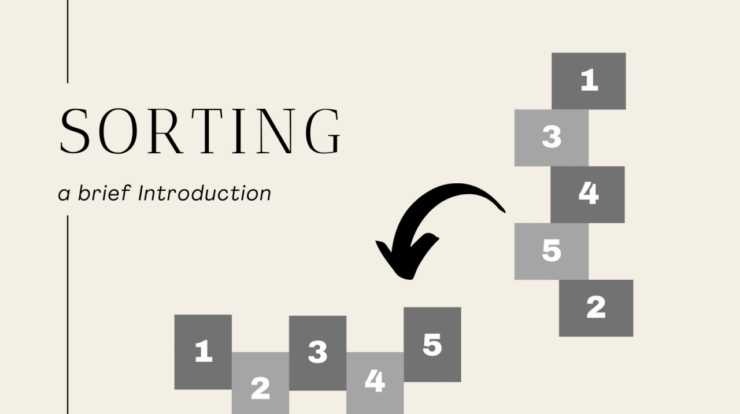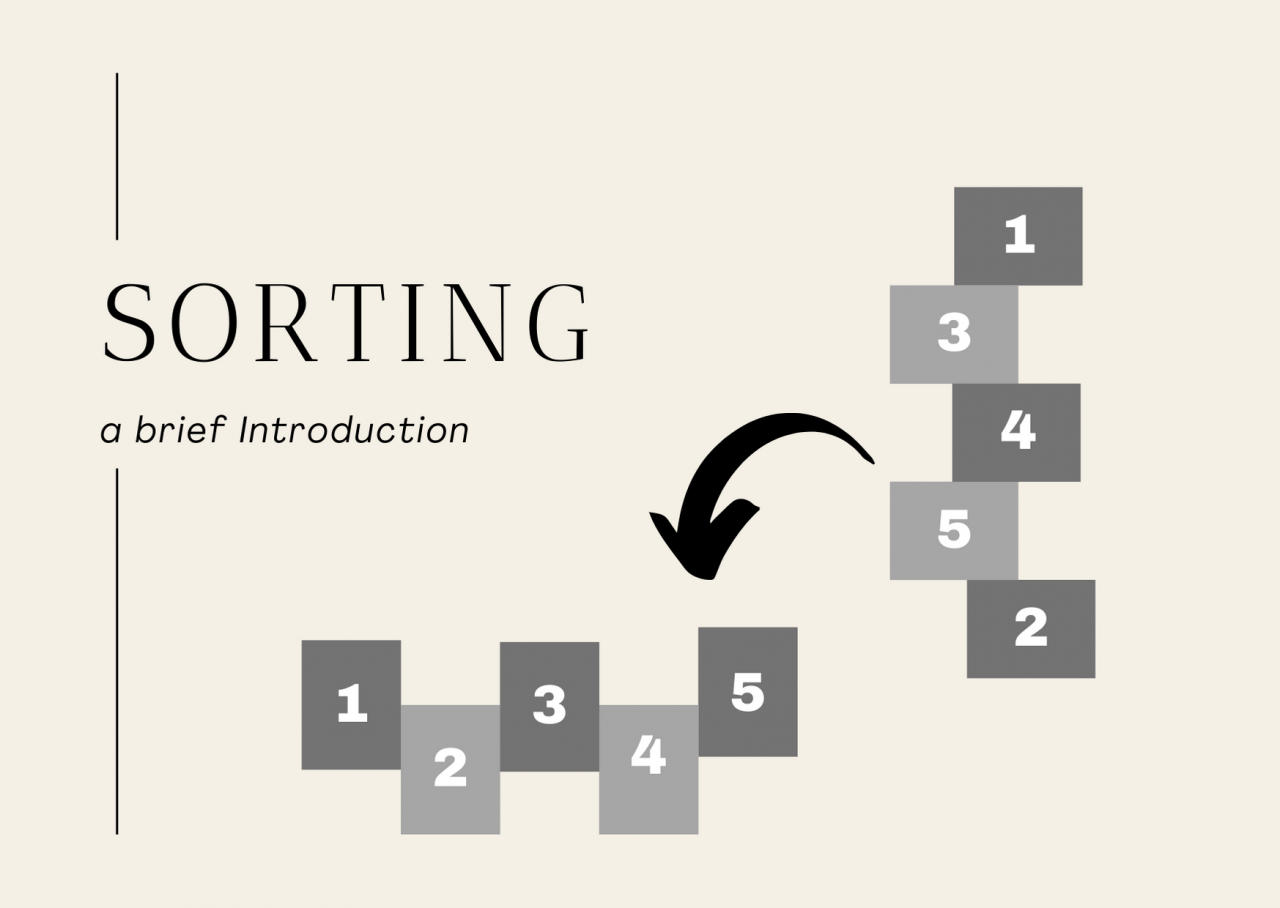
Sort definition – In the realm of computer science, the term ‘sort’ holds immense significance, referring to the process of arranging data in a specific order, be it ascending, descending, or based on custom criteria. Sorting algorithms, the workhorses of data manipulation, play a pivotal role in organizing and retrieving information efficiently, shaping the landscape of data analysis and decision-making.
The diverse array of sorting algorithms, each with its unique strengths and weaknesses, caters to a wide range of data structures and use cases. From the simplicity of Bubble Sort to the lightning-fast performance of Quick Sort, the choice of algorithm depends on factors such as the size of the data set, the desired order, and the available computational resources.
Sorting in Computer Science

Sorting is a fundamental operation in computer science that involves arranging data in a specific order, typically ascending or descending order. It plays a crucial role in data structures and algorithms, enabling efficient data retrieval, analysis, and decision-making.
Sorting algorithms are designed to reorganize a given set of data based on a specified comparison criteria. These algorithms operate by comparing elements and swapping their positions until the entire data set is sorted.
Types of Sorting Algorithms, Sort definition
- Bubble Sort:A simple algorithm that repeatedly compares adjacent elements and swaps them if they are out of order.
- Selection Sort:Finds the minimum or maximum element from the unsorted portion of the data and swaps it with the first element, repeating this process until the entire data set is sorted.
- Insertion Sort:Builds the sorted portion of the data one element at a time by inserting each unsorted element into its correct position in the sorted portion.
- Merge Sort:Divides the data into smaller subarrays, sorts each subarray, and then merges them back together to obtain the sorted data.
- Quick Sort:Selects a pivot element, partitions the data into two subarrays based on the pivot, and recursively applies the same process to the subarrays.
- Heap Sort:Builds a binary heap data structure from the data and repeatedly extracts the maximum or minimum element from the heap, resulting in a sorted data set.
Time and Space Complexities
| Algorithm | Time Complexity (Best) | Time Complexity (Average) | Time Complexity (Worst) | Space Complexity |
|---|---|---|---|---|
| Bubble Sort | Ω(n) | Θ(n2) | O(n2) | O(1) |
| Selection Sort | Ω(n2) | Θ(n2) | O(n2) | O(1) |
| Insertion Sort | Ω(n) | Θ(n2) | O(n2) | O(1) |
| Merge Sort | Ω(n log n) | Θ(n log n) | O(n log n) | O(n) |
| Quick Sort | Ω(n log n) | Θ(n log n) | O(n2) | O(log n) |
| Heap Sort | Ω(n) | Θ(n log n) | O(n log n) | O(1) |
Concluding Remarks

Sorting algorithms are indispensable tools in the modern digital landscape, powering applications from search engines and social media platforms to e-commerce websites and scientific simulations. Their ability to organize and retrieve data with precision and efficiency makes them essential for extracting meaningful insights from the ever-growing sea of information.
Questions Often Asked: Sort Definition
What is the purpose of sorting algorithms?
Sorting algorithms arrange data in a specific order, making it easier to search, retrieve, and analyze.
What are the different types of sorting algorithms?
There are numerous sorting algorithms, each with its own strengths and weaknesses, including Bubble Sort, Selection Sort, Insertion Sort, Merge Sort, and Quick Sort.
How do I choose the right sorting algorithm for my application?
The choice of sorting algorithm depends on factors such as the size of the data set, the desired order, and the available computational resources.






